The Sa Huynh Culture Museum houses artifacts with a history spanning over 2,000 years and is considered by scholars to be one of the richest and most unique museums in Vietnam.
Hoi An is more than just charming lanterns, delicious street food, and ancient yellow houses. Beyond the picturesque scenes, this UNESCO World Heritage site holds layers of history, stretching back millennia. And if you’re truly keen to peel back those layers, there’s one place you absolutely must visit: the Sa Huynh Culture Museum. Trust me, as someone who’s explored every corner of this beautiful town, this museum offers a fascinating glimpse into the very foundations of what makes Hoi An so special.
1. Sa Huynh Culture Museum – A Glimpse into Ancient Civilizations
1.1. Introducing the Sa Huynh Culture Museum
Located right in the heart of Hoi An Ancient Town at 149 Tran Phu Street, the Sa Huynh Culture Museum is easily accessible as you wander through the historic streets. Established in 1994, it houses nearly 1,000 artifacts unearthed from various archaeological sites in the Quang Nam province, particularly from the Hau Xa, Thanh Chiem, and An Bang villages. These artifacts represent the largest and most unique collection of Sa Huynh civilization relics in Vietnam.
- Address: No. 149 Tran Phu Street, Minh An Ward, Hoi An City
- Opening hours (for reference): 7:00 AM – 9:00 PM (open daily)
The Sa Huynh culture flourished between 1000 BC and 200 AD, primarily along the central and southern coastal regions of Vietnam. They were a sophisticated people, renowned for their advanced metalworking skills (especially iron and bronze), unique pottery, and intricate burial rituals, notably the use of large burial jars. This culture forms one of the three ancient cradles of civilization in Vietnam, alongside the Dong Son and Dong Nai cultures.
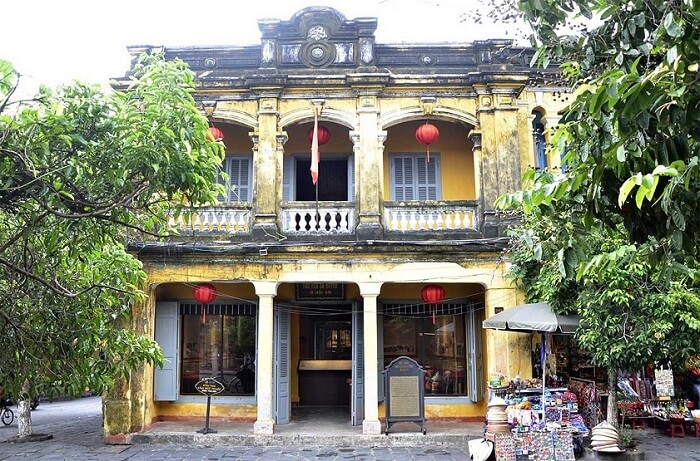
The Sa Huynh Culture Museum features Hoi An’s signature yellow walls (source: collected)
The museum itself is designed to highlight the beauty and historical value of its contents. Its distinctive yellow facade with brown wooden accents gives it an ancient, welcoming feel, drawing you into its historical embrace. Inside, the minimalist design ensures that the focus remains entirely on the incredible artifacts.
1.2. Do You Need to Buy Tickets to Visit the Museum?
Good news for travelers! The Sa Huynh Culture Museum is typically included in the general Hoi An Ancient Town entrance ticket. So, when you purchase your ticket to explore the ancient town – which is highly recommended to fully experience Hoi An’s heritage sites – access to the Sa Huynh Culture Museum is usually covered.
For international visitors, the Hoi An Ancient Town ticket is generally 120,000 VND (around $5 USD), while for Vietnamese visitors, it’s 80,000 VND. Children under 1 meter are usually free, and those between 1m and 1.4m might have a reduced fee. This ticket allows you to visit a number of heritage sites, including the Japanese Covered Bridge, various old houses, communal houses, and other museums.
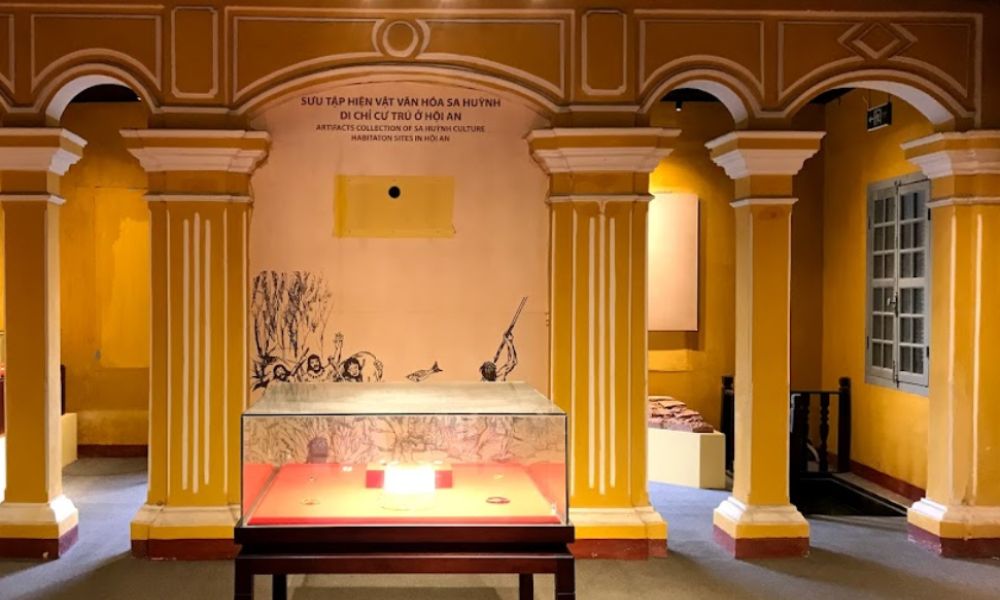
The Sa Huynh Culture Museum is one of the most popular tourist attractions in Hoi An (source: collected)
The museum is usually open daily from 7:00 AM to 9:00 PM, but it’s important to note that it often closes on the 10th day of every month for maintenance. Always double-check opening hours or recent local updates if you’re planning your visit around that specific date.
1.3. Cultural Treasures Stored in the Sa Huynh Culture Museum Hoi An
Once you step inside, prepare to be amazed by the sheer variety and historical depth of the exhibits. The museum meticulously displays artifacts that offer incredible insights into the daily life, beliefs, and artistic prowess of the Sa Huynh people.
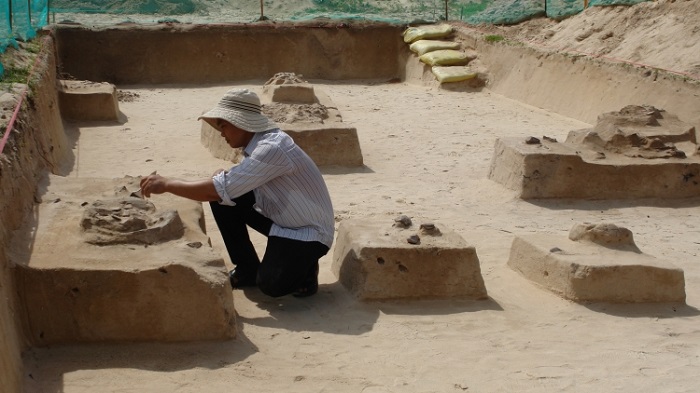
Excavation of the Sa Huynh cultural site (Photo: Collected)
Here’s what you can expect to see:
Funerary Jars: Perhaps the most iconic artifacts are the over 200 burial jars. These large, distinctively shaped ceramic jars were used for secondary burials, a unique funerary custom of the Sa Huynh culture. Some jars are intact, showcasing intricate engravings of religious symbols, plants, and animals, reflecting their spiritual beliefs and aesthetic sense.
Ceramics and Pottery: Beyond the burial jars, you’ll find a rich collection of pottery used for daily life, including bowls, vases, and cooking utensils. These items demonstrate the Sa Huynh people’s advanced ceramic techniques and artistic sensibility, with graceful shapes and lively patterns.
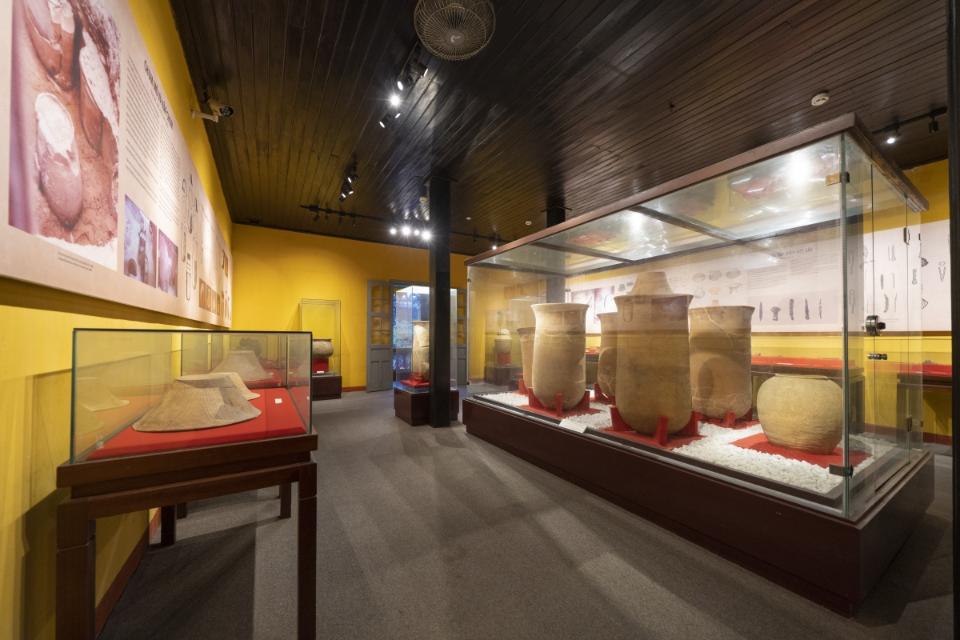
Ancient artifacts over 3,000 years old at the Sa Huynh Culture Museum (Photo: Collected)
Metalworking Masterpieces: The Sa Huynh culture was an Iron Age civilization, and the museum proudly displays a range of iron and bronze artifacts. Look out for axes, swords, spearheads, knives, and sickles. These tools and weapons not only highlight their sophisticated metalworking skills but also offer clues about their agricultural practices and warfare.
Jewelry and Ornaments: The Sa Huynh people had a keen sense of aesthetics, evident in their stunning jewelry. You’ll see necklaces made of gemstones, intricate three-pointed earrings, unique scarf-shaped earrings, and sophisticated gold rings. Many of these ornaments were made from jade (nephrite), glass, and various precious stones like carnelian, agate, and garnet, some of which were imported, indicating extensive trade networks.
Trade and Exchange: The exhibits clearly illustrate the flourishing trade relationships that the Sa Huynh people maintained with other regions, both within ancient Vietnam and with other parts of Southeast Asia. The presence of imported materials in their jewelry, along with discoveries of Han dynasty-style bronze mirrors at Sa Huynh sites, testifies to their active role in ancient maritime trade routes.
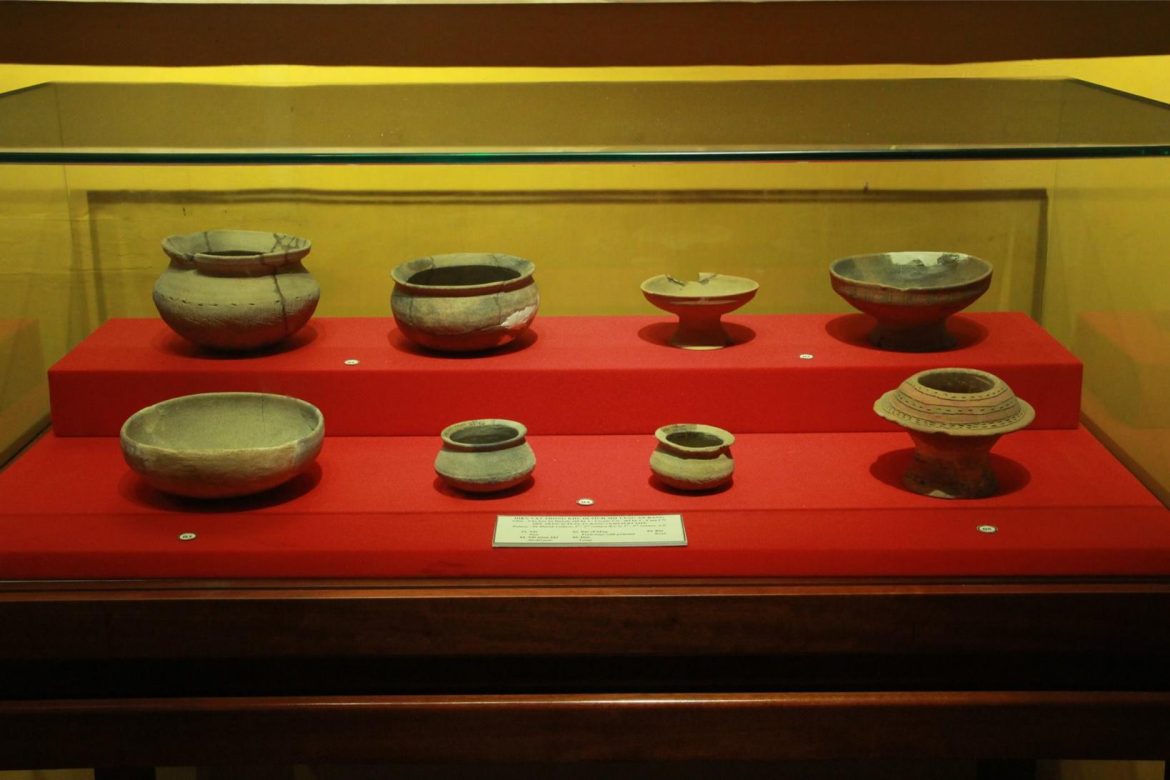
Sa Huynh cultural artifact collection (Photo: Collected)
Cultural Documentation: Beyond the artifacts, the museum also provides valuable documentation on the Sa Huynh people’s funeral customs, their concepts of life and death, their aesthetic perceptions, and insights into ancient Hoi An’s trading activities. This comprehensive presentation helps visitors truly grasp the essence of this ancient civilization.
2. Important Notes When Visiting Sa Huynh Culture Museum Hoi An
To make your visit smooth and enjoyable, here are a few tips:
- Check Opening Hours: As mentioned, the museum is typically open daily from 7:00 AM to 9:00 PM, but closed on the 10th of every month. It’s always a good idea to confirm if you’re visiting around that date.
- Combine with Ancient Town Ticket: Remember that the museum entrance is usually included with your Hoi An Ancient Town ticket. Keep your ticket handy, as it allows access to several other heritage sites in the town.
- Allocate Time: While the museum isn’t huge, its exhibits are dense with historical information. Give yourself at least 1 hour to truly appreciate the artifacts and read the descriptions (which are often in English).
- Photography: Generally, photography is allowed inside the museum, but always be respectful and avoid using flash.
- Location: The museum’s central location at 149 Tran Phu Street makes it easy to incorporate into your walking tour of Hoi An Ancient Town.
3. Other Famous Museums in Hoi An Worth Exploring
While the Sa Huynh Culture Museum offers a unique glimpse into ancient history, Hoi An is home to several other excellent museums that cater to various interests. If you have more time, consider visiting these:
Hoi An Museum of History & Culture (10B Tran Hung Dao Street): This museum provides a broader overview of Hoi An’s development from its earliest times through its heyday as a trading port to the present day. It’s a great place to understand the progression of the town’s rich heritage.
Museum of Trade Ceramics (80 Tran Phu Street): Given Hoi An’s history as a major trading hub, this museum is fascinating. It showcases exquisite ceramic artifacts from various Asian countries, reflecting the vibrant international trade that once thrived here.
Museum of Folk Culture (33 Nguyen Thai Hoc Street): For a deeper understanding of local customs, daily life, and traditional crafts, this museum is a must-visit. It displays objects related to fishing, agriculture, traditional medicine, and folk performances.
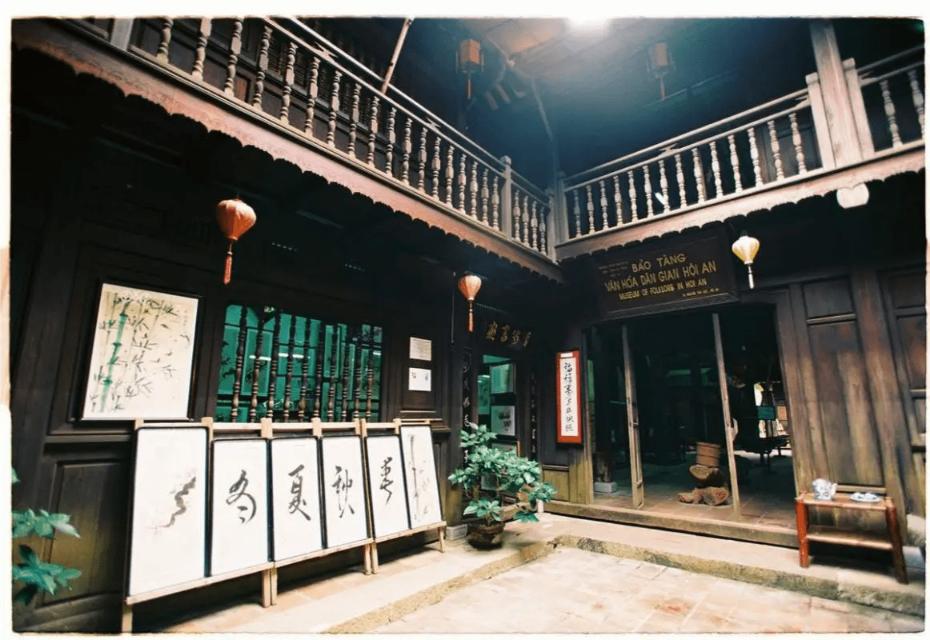
Museum of Folk Culture: A Famous Attraction in Hoi An (source: collected)
Precious Heritage Art Gallery Museum (26 Phan Boi Chau Street): This museum, founded by French photographer Réhahn, celebrates Vietnam’s ethnic diversity through stunning portraits and traditional costumes. It’s a vibrant and visually rich experience.
Thanh Ha Terracotta Park (Block 5, Thanh Ha Ward): A bit outside the Ancient Town, this is more than just a museum; it’s a large park dedicated to the traditional pottery village of Thanh Ha. You can see artisans at work, learn about pottery making, and admire intricate terracotta sculptures.
Each of these museums offers a distinct perspective on Hoi An’s multifaceted heritage, making your visit to this enchanting town even richer.
The Sa Huynh Culture Museum is a profoundly rich historical and cultural destination in Hoi An, so don’t miss it. Contact Lux Travel DMC to plan your Hoi An trip, or a tailor-made journey across Vietnam designed to your preferences, ensuring privacy, luxury, and environmental responsibility.
